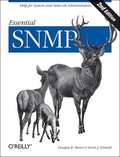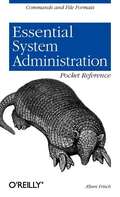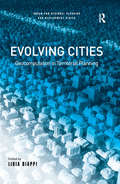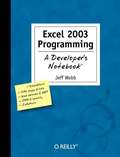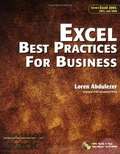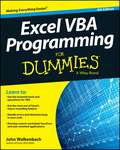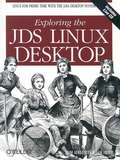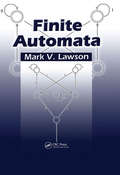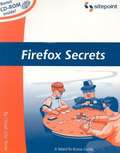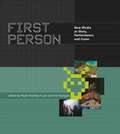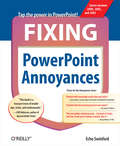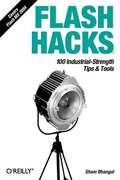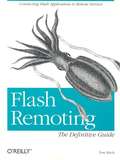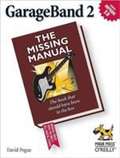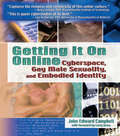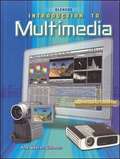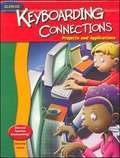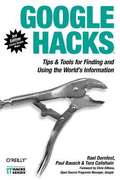- Table View
- List View
Essential SNMP, 2nd Edition
by Douglas Mauro Kevin SchmidtSimple Network Management Protocol (SNMP) provides a "simple" set of operations that allows you to more easily monitor and manage network devices like routers, switches, servers, printers, and more. The information you can monitor with SNMP is wide-ranging--from standard items, like the amount of traffic flowing into an interface, to far more esoteric items, like the air temperature inside a router. In spite of its name, though, SNMP is not especially simple to learn. O'Reilly has answered the call for help with a practical introduction that shows how to install, configure, and manage SNMP. Written for network and system administrators, the book introduces the basics of SNMP and then offers a technical background on how to use it effectively. Essential SNMP explores both commercial and open source packages, and elements like OIDs, MIBs, community strings, and traps are covered in depth. The book contains five new chapters and various updates throughout. Other new topics include: Expanded coverage of SNMPv1, SNMPv2, and SNMPv3 Expanded coverage of SNMPc The concepts behind network management and change management RRDTool and Cricket The use of scripts for a variety of tasks How Java can be used to create SNMP applications Net-SNMP's Perl module The bulk of the book is devoted to discussing, with real examples, how to use SNMP for system and network administration tasks. Administrators will come away with ideas for writing scripts to help them manage their networks, create managed objects, and extend the operation of SNMP agents. Once demystified, SNMP is much more accessible. If you're looking for a way to more easily manage your network, look no further than Essential SNMP, 2nd Edition .
Essential System Administration Pocket Reference
by Æleen FrischIf you're a Unix system administrator, then the information you need every day just to get your job done could fill a book--a very large book. But, practically speaking, you don't want to stop and thumb through a weighty volume each time a problem arises. Your answer is the Essential System Administration Pocket Reference , the only system administration reference that fits in your pocket. Concise and easy-to-use, this little book is the portable companion to the classic Essential System Administration by Æleen Frisch. The Essential System Administration Pocket Reference is a quick reference to all the fundamental and essential tasks required to run such divergent Unix systems as Solaris, Linux, AIX, BSD, SuSe, Red Hat, and more. Beginners and experienced administrators alike will quickly be able to apply its principles and advice to solve everyday problems. The book is divided into three parts: Commands, Syntax and Their Applications, Configuration Files and Formats, and Operating System Specific Information. The information in this book is a must-have for any administrator or user of a Unix system. O'Reilly's Pocket References have become a favorite among technology professionals everywhere. By providing a wealth of important details in a concise, well-organized format, these handy books deliver just what you need to complete the task at hand. When you've reached a sticking point and need to get to a solution quickly, the new Essential System Administration Pocket Reference is the book you'll want to have.
Evolving Cities: Geocomputation in Territorial Planning (Urban and Regional Planning and Development Series)
by Lidia DiappiGeocomputation has come of age. The whirlwind of change experienced in Geographical Information Science (GIS) - developments in IT, and new data gathering and earth observing technologies - has taken GIS beyond mere data and towards its analysis, modeling, and use in problem solving. Geocomputation is now at the dynamic edge of this revolution. Bringing together the leading researchers in geocomputation, this volume provides an up-to-date overview of the development of new artificial intelligence principles and technologies (NN, CA, Multi-agent Systems and Evolutionary Algorithms) used for the analysis, development and evaluation of urban planning policies and programmes. Charting the new approaches to data-processing, the book provides pointers on how to harness these technologies, advancing the knowledge level of planning by multiplying the information capacity of GIS, and offering a new approach to territorial modeling and micro-scale descriptions of socio-economic, behavioural and micro-spatial theories of urban processes and land use change.
Excel 2003 Programming: A Developer's Notebook
by Jeff WebbOn the surface, it doesn't appear as if much in Excel 2003 has changed. There are a handful of new objects and the user interface is largely the same. But beyond a superficial glance, you'll see that there are fundamental shifts implied by the new features: Lists, XML, web services, .NET, and InfoPath build a framework for entirely new ways to exchange data with Excel. In fact, that's much of what Excel 2003 is all about--solving problems that deal with teamwork-- collecting and sharing data, programming across applications, and maintaining security. The latest in our Developer's Notebook series, this guide introduces intermediate to advanced Excel VBA programmers to the newest programming features of Excel 2003,--focusing just on what's new--so you can get up to speed quickly. Light on theory and long on practical application, the book takes you directly to the topics you'll want to master through a series of hands-on projects. With dozens of practical labs, you'll be able to decide for yourself which new aspects of Excel will be useful or not in your own work. And best of all, you won't have to buy an expensive revision of a legacy Excel programming tutorial to learn about the new features--if they're covered there at all. Excel 2003 Programming: A Developer's Notebook shows you how to work with lists and XML data, secure Excel applications, use Visual Studio Tools for Office, consume Web Services, and collect data with Infopath. Each chapter is organized into a collection of labs, each of which addresses a specific programming problem. You can follow along to complete the lab on your own, or jump ahead and use the samples the author has built for you. The new Developer's Notebooks series from O'Reilly covers important new tools for software developers. Emphasizing example over explanation and practice over theory, they focus on learning by doing--you'll get the goods straight from the masters, in an informal and code-intensive style that suits developers. If you've been curious about Excel 2003, but haven't known where to start, this no-fluff, lab-style guide is the solution.
Excel Best Practices for Business
by Loren AbdulezerHow to create, manage, and validate spreadsheets that will stand up to scrutiny and provide a clear and accurate picture of your enterprise.
Excel VBA Programming For Dummies
by John WalkenbachHaving Excel and just using it for standard spreadsheets is a little like getting the ultimate cable system and a 50" flat panel plasma HDTV and using it exclusively to watch Lawrence Welk reruns. With Visual Basic for Applications (VBA) programming, you can take advantage of numerous Excel options such as: creating new worksheet functions; automating tasks and operations; creating new appearances, toolbars, and menus; designing custom dialog boxes and add-ins; and much more. This guide is not for rank Excel amateurs. It's for intermediate to advanced Excel users who want to learn VBA programming (or whose bosses want them to learn VBA programming). You need to know your way around Excel before you start creating customized short cuts or systems for speeding through Excel functions. If you're an intermediate or advanced Excel user, Excel VBA For Dummies helps you take your skills (and your spreadsheets) to the next level. It includes: An introduction to the VBA language A hands-on, guided, step-by-step walk through developing a useful VBA macro, including recording, testing, and changing it, and testing it The essential foundation, including the Visual Basic Editor (VBE) and its components, modules, Excel object model, subroutines and functions, and the Excel macro recorder The essential VBA language elements, including comments, variables and constants, and labels Working with Range objects and discovering useful Range objective properties and methods Using VBA and worksheet functions, including a list and examples Programming constructions, including the GoTo statement, the If-Then structure, Select Case, For-Next loop, Do-While loop, and Do-Until loop Automatic procedures and Workbook events, including a table and event-handler procedures Error-handling and bug extermination techniques, and using the Excel debugging tools Creating custom dialog boxes, also known as UserForms, with a table of the toolbox controls and their capabilities, how-to for the dialog box controls, and UserForm techniques and tricks Customizing the Excel toolbars Using VBA code to modify the Excel menu system Creating worksheet functions and working with various types of arguments Creating Excel add-ins such as new worksheet functions you can use in formulas or new commands or utilities Author John Walkenbach is a leading authority on spreadsheet software and the author of more than 40 spreadsheet books including Excel 2003 Bible and Excel 2003 Power Programming with VBA. While this guide includes tons of examples and screenshots, Walkenbach knows there's no substitute for hands-on learning. The book is complete with: A dedicated companion Web site that includes bonus chapters plus all sample programs to save you a lot of typing and let you play around and experiment with various changes Information to help you make the most of Excel's built-in Help system so you can find out other stuff you may need to know What are you waiting for? Sure, learning to do VBA programming takes a little effort, but it's a Very Big Accomplishment.
Exploring the JDS Linux Desktop
by Tom Adelstein Sam HiserThe Java Desktop System (TM), from Sun Microsystems, is a modern system for all kinds of users, novice through expert. As an unusually robust, well-integrated desktop system, it may become the first to fulfill the promise of mass adoption for open source. JDS brings Linux and other open source software up to a level of usability that makes them suitable for the enormous base of Personal Computer users including office workers, students, mobile and home users. It behaves pretty much the way a Windows or Mac user would expect, but with many more powerful features. JDS has seen widespread adoption in the United States, Britain, China, and elsewhere. This book is the ideal guide to JDS: it is clear and direct, but loaded with insights from authors who have spent time working with, supporting, and enhancing the system. Tom Adelstein is an award winning polymath system designer; Sam Hiser is a respected business consultant with an itch that led him to become the marketing project lead for OpenOffice.org. Both are advocates for open source and founders of the Open Government Interoperability Project, members of the Open Source Software Institute and contributors to the JDShelp.org project. This book carefully covers such housekeeping chores as setting up networking, updates, and backups. Then it enters into great depth concerning the key productivity tools every user needs: email, web browsing, instant messaging, word processing, spreadsheets, and slide presentations. A number of chapters and appendices concerning useful tools, including things you can add to your system, rounds out this remarkably useful book. It has plenty to offer the new user as well as the seasoned Linux professional.
Extreme Programming Adventures in C#
by Ronald JeffriesApply what you know about extreme programming and object- oriented design to learning C# and the Microsoft .NET Framework on the fly. Author Ron Jeffries, a leading voice and practitioner in the extreme programming movement, demonstrates how to apply its key concepts-including the use of customer stories, customer acceptance tests, and "Spikes"-and the fundamental techniques of Simple Design, Test-Driven Development, and Refactoring to create practical, NET-ready applications. You'll also learn how to use NUnit, a unit-testing tool for .NET languages. This essential, high-level reference provides the expert guidance, hands-on insights, and downloadable code you need to build an XML editor, a database application, a Web service, and other useful applications.
Finite Automata
by Mark V. LawsonInterest in finite automata theory continues to grow, not only because of its applications in computer science, but also because of more recent applications in mathematics, particularly group theory and symbolic dynamics. The subject itself lies on the boundaries of mathematics and computer science, and with a balanced approach that does justice to
Firefox Hacks
by Nigel McfarlaneFirefox Hacks is ideal for power users who want to take full advantage of Firefox from Mozilla, the next-generation web browser that is rapidly subverting Internet Explorer's once-dominant audience. It's also the first book that specifically dedicates itself to this technology. Firefox is winning such widespread approval for a number of reasons, including the fact that it lets users browse faster and more efficiently. Perhaps its most appealing strength, though, is its increased security something that is covered in great detail in Firefox Hacks . Clearly the web browser of the future, Firefox includes most of the features that browser users are familiar with, along with several new features, such as a bookmarks toolbar and tabbed pages that allow users to quickly switch among several web sites. Firefox Hacks offers all the valuable tips and tools you need to maximize the effectiveness of this hot web application. It's all covered, including how to customize its deployment, appearance, features, and functionality. You'll even learn how to install, use, and alter extensions and plug-ins. Aimed at clever people who may or may not be capable of basic programming tasks, this convenient resource describes 100 techniques for 100 strategies that effectively exploit Firefox. Or, put another way, readers of every stripe will find all the user-friendly tips, tools, and tricks they need to make a productive switch to Firefox. With Firefox Hacks , a superior and safer browsing experience is truly only pages away. The latest in O'Reilly's celebrated Hacks series, Firefox Hacks smartly complements other web-application titles such as Google Hacks and PayPal Hacks .
Firefox Secrets
by Cheah Chu YeowThis is a must read guide to anyone who wants to learn how to browse faster and more conveniently with Firefox. Firefox Secrets will teach you how to get the most from Mozilla, including how to find and use all the hidden features, extensions available to you. You'll learn: Ways to ease the transition from Internet Explorer A way to setup multiple "homepages" when you launch your browser Read RSS feeds from within Firefox using a free extension Where to download a new and less obtrusive "Download Manager" The best "must-have" extensions to download as well as the "fun" ones Two different ways to speed up Firefox downloads with prefetcher and pipelining Firefox's secret features for Web Developers And much, much more! Firefox Secrets is the ultimate guide to the Web Browser that major magazines, newspapers and even Microsoft's own "Slate.com" website are recommending as the ultimate replacement to Internet Explorer.
First Person: New Media as Story, Performance, and Game
by Noah Wardrip-Fruin Pat HarriganYet it is widely believed that the market for electronic literature- predicted by some to be the future of the written word- languishes. Even bestselling author Stephen King achieved disappointing results with his online publication of "Riding the Bullet" and "The Plant." Isn't it possible, though, that many hugely successful computer games- those that depend on or at least utilize storytelling conventions of narrative, character, and theme- can be seen as examples of electronic literature? And isn't it likely that the truly significant new forms of electronic literature will prove to be (like games) so deeply interactive and procedural that it would be impossible to present them as paper-like "e-books"? The editors of First Person have gathered a remarkably diverse group of new media theorists and practitioners to consider the relationship between "story" and "game," as well as the new kinds of artistic creation (literary, performative, playful) that have become possible in the digital environment. This landmark collection is organized as a series of discussions among creators and theorists; each section includes three presentations, with each presentation followed by two responses. Topics considered range from "Cyberdrama" to "Ludology" (the study of games), to "The Pixel/The Line" to "Beyond Chat." The conversational structure inspired contributors to revise, update, and expand their presentations as they prepared them for the book, and the panel discussions have overflowed into a First Person website (created in conjunction with the online journal Electronic Book Review).
Fixing PowerPoint Annoyances: How to Fix the Most Annoying Things About Your Favorite Presentation Program (Annoyances)
by Echo SwinfordIf you're vexed and perplexed by PowerPoint, pick up a copy of Fixing PowerPoint Annoyances . This funny, and often opinionated, guide is chock full of tools and techniques for eliminating all the problems that drive audiences and presenters crazy. There's nothing more discouraging than an unresponsive audience--or worse, one that snickers at your slides. And there's nothing more maddening than technical glitches that turn your carefully planned slide show into a car wreck. Envious when you see other presenters effectively use nifty features that you've never been able to get to work right? Suffer no more! Fixing PowerPoint Annoyances by Microsoft PowerPoint MVP Echo Swinford rides to the rescue. Microsoft PowerPoint is the most popular presentation software on the planet, with an estimated 30 million presentations given each day. So no matter how frustrated you get, you're not about to chuck the program in the Recycle Bin. Fixing PowerPoint Annoyances , presents smart solutions to a variety of all-too-familiar, real-world annoyances. The book is divided into big categories, with annoyances grouped by topic. You can read it cover to cover or simply jump to the chapter or section most relevant to you. Inside its pages you'll learn how to create your own templates, work with multiple masters and slide layouts, and take advantage of various alignment and formatting tools. You'll also learn how to import Excel data; insert graphics, PDF, and Word content; create, edit, and format organization charts and diagrams; use action settings and hyperlinks to jump to other slides; and add sound, video, and other types of multimedia to spark up your presentations. Entertaining and informative, Fixing PowerPoint Annoyances is filled with humorous illustrations and packed with sidebars, tips, and tricks, as well as links to cool resources on the Web.
Flash 8 Cookbook
by Joey LottThis practical, nuts-and-bolts toolkit puts theory into practice with ready-made answers to common Flash development questions. It's the perfect resource for Flash developers, as well as designers who are ready to start doing development work. Flash 8 Cookbook offers quick look-up (and cross-referenced) recipes in four main categories: Creating Flash Content Building Interactive Flash Interfaces Adding Multimedia and Data Planning Flash Projects Using O'Reilly's popular Problem/Solution/Discussion Cookbook format, this book offers 280 standalone recipes that include a brief explanation of how and why the solution works, so you can adapt it to similar situations you may run across in the future. For people who say, "I understand everything in theory, but I don't know where to start in practice," this book offers ready-to-use answers to real-world problems. Joey Lott is the author of ActionScript Cookbook (O'Reilly) and co-author of Flash MX 2004 ActionScript Bible (Wiley). He's a leading speaker and consultant in the Flash development community.
Flash 8: Projects for Learning Animation and Interactivity
by Rich Shupe Robert HoekmanMacromedia Flash is fast becoming the Web's most widely used platform for creating rich media with animation and motion graphics, but mastering Flash isn't easy. Most entry-level books teach through simple examples that concentrate on either animation or scripting, but rarely both together. To get the most from Flash 8, you not only need to be proficient in programming/interface design, you need the creativity for story telling and the artistic insights to design fluid animation. Flash 8: Projects for Learning Animation and Interactivity teaches Flash design rather than simply Flash itself. With a standalone series of walkthroughs and tutorials for Flash beginners coming from a graphics field, this book teaches Flash in the context of real-world projects. Rather than learn a Flash tool for the sake of it, you learn which areas of Flash are important, and which are less used, simply by seeing how typical content is actually created. And rather than a text-heavy approach, this graphically rich book leads you through hands-on examples by illustration. Each project in the book starts with goals and broad sketches before moving to design and scripting. This helps you understand design intent-the why of the process-rather than just learning the interfaces and the how of it all. Along the way, you'll create Flash content that includes traditional animation techniques (as seen in full-length animated features), and ActionScript-based interactive animation, such as custom web site interface designs. You also learn how to combine both traditional animation techniques and ActionScript to create feature-rich Flash assets from the ground up. Co-authored by educational developers with years of experience creating compelling content, interfaces, and applications, Flash 8: Projects for Learning Animation and Interactivity offers a content-driven approach that is also inspiration-driven. You learn because you're accomplishing something tangible, not because you think you need to know how a tool works. If you want to understand how various features of Flash come together to create a final end design, this book provides you with both the insight and the know-how.
Flash Hacks
by Sham BhangalIf you've ever seen an especially cool Flash effect on the web, gone straight to your trusty Flash book to find out how to do it, then turned away empty-handed-- Flash Hacks is for you. This unique book offers a collection of expert Flash tips and tricks for optimization, creating interesting effects, ActionScript programming, sound and video effects, and much more--and you don't need to be an expert to use them (although you'll certainly look like one). With Flash technology, you can create compelling web content, expressive user interfaces, and rich applications for the Internet--all of which dramatically enhance the user experience. But Flash is not just practical, it's a wellspring of opportunities to unleash your creativity and have fun. Flash Hacks dives straight into all that's fun and creative about Flash, while presenting useful programming techniques and practical--although never mundane--hacks that can make your work easier. Geared to cover Flash MX, Flash MX 2004, and Flash MX Professional 2004, Flash Hacks begins with hacks on authoring, testing, and web environments. You'll learn how to beat the Flash bloat bug, realistically simulate the web, create a JavaScript-free Flash sniffer, and hack a spellchecker for Flash. Other hacks in the book are grouped in the following areas: Primitives Timelines Symbols Flash Assets (sound, video, and bitmaps) Code hacks Events and event handling Advanced animation UI design hacks True to O'Reilly's popular Hacks series, Flash Hacks tackles problems and solutions that aren't dealt with elsewhere. You'll pick up insider tips from the experts, and learn about amazing and sometimes quirky aspects of Flash. If you want more than your average Flash user--you want to explore and experiment, unearth shortcuts, create useful tools, and come up with fun things to try on your own-- Flash Hacks is the book you'll need.
Flash Remoting: The Definitive Guide
by Tom MuckFlash Remoting MX lets developers easily integrate rich Macromedia Flash content with applications that are built using Macromedia ColdFusion MX, Microsoft .NET, Java, PHP, or SOAP-based web services. The result is complex client/server applications that more closely resemble desktop applications than traditional web pages. Gone is the click/wait/reload approach of HTML. Your web application uses Flash as the front end while Flash Remoting handles the communication behind the scenes with the application server. All the end user knows is that it's fast and flexible. The potential uses for Flash Remoting are endless. Flash Remoting: The Definitive Guide will help you understand this breakthrough technology and use it to build your own Rich Internet Applications (RIAs). Build applications that connect to a database, file system, or other server-side technologies. Or, use Flash Remoting to create: online stores that feature catalogs and shopping cart systems sound and video clip libraries banner ads with built-in shopping carts, click-through tracking, and site search capabilities new controls that can be used in place of HTML extensions to Flash, Dreamweaver, Fireworks, and more front-ends to databases for administrators The book begins with Flash Remoting basics: setup, installation and an introduction to its underlying concepts. Next, you'll explore the Flash's User Interface components as they relate to Flash Remoting. Then, you'll gain insights into Flash Remoting internals and the Remoting API. The book is rich with examples that you will be able to run on your own system. The next section focuses on the server-side environment that you'll use for your applications. Individual chapters cover Flash Remoting with ColdFusion, Server-Side ActionScript, Java, ASP.NET, and PHP. The last section covers more advanced Flash Remoting techniques, such as calling web services from Flash Remoting, extending objects and UI controls, best practices, and debugging. Plus there is a detailed chapter demonstrating a real-world application. The book concludes with a Flash Remoting API reference. Developers who are looking to create Rich Internet Applications with Flash will find Flash Remoting: The Definitive Guide indispensable.
Fools Rush In: Steve Case, Jerry Levin, and the Unmaking of AOL Time Warner
by Nina MunkA carefully explained business debacle.
From Airline Reservations to Sonic the Hedgehog: A History of the Software Industry
by Martin Campbell-KellyFrom its first glimmerings in the 1950s, the software industry has evolved to become the fourth largest industrial sector of the US economy. Starting with a handful of software contractors who produced specialized programs for the few existing machines, the industry grew to include producers of corporate software packages and then makers of mass-market products and recreational software. This book tells the story of each of these types of firm, focusing on the products they developed, the business models they followed, and the markets they served. By describing the breadth of this industry, Martin Campbell-Kelly corrects the popular misconception that one firm is at the center of the software universe. He also tells the story of lucrative software products such as IBM's CICS and SAP's R/3, which, though little known to the general public, lie at the heart of today's information infrastructure. With its wealth of industry data and its thoughtful judgments, this book will become a starting point for all future investigations of this fundamental component of computer history.
Gag Rule: On the Suppression of Dissent and the Stifling of Democracy
by Lewis LaphamLapham issues a call to action in defense of one of our most important liberties--the right to raise our voices against the powers that be and have those voices heard.
GarageBand 2: The Missing Manual
by David PogueWhether you're a professional musician or a mere novice, Apple's GarageBand software has everything you need to produce commercial-quality recordings entirely on your own. Just imagine how many thousands of singers and instrumentalists remain undiscovered because they lack the capability to produce viable demos. Well, no more. Now there's no need to assemble a backup band or book time at a professional studio--GarageBand has it covered. And GarageBand 2: The Missing Manual gives you the know-how you need to make it all happen. It's an authoritative, witty guide to constructing digital recordings with GarageBand. Written by the master of the Missing Manual series, and a musician himself, David Pogue, this top-selling book shows you how to maximize the program's entire set of tools. Pre-recorded loops, sampled sounds, live recordings--they're all explained in easy-to-understand language. It also shows you how to apply professional-sounding effects like reverb or chorusing, and then export the finished product to iTunes, where you can download your work to an iPod, export it as an MP3, or burn it onto CDs. Now revised to reflect GarageBand's latest features, this book's second edition also addresses how to: use GarageBand's eight-track capabilities display music notation in real time enhance timing and pitch for better quality recordings change the tempo and key of recorded instruments tune guitars with GarageBand before recording So if you're chasing a dream or just having fun, GarageBand 2: The Missing Manual is the only resource you need to make the finest musical recordings possible.
Getting It On Online: Cyberspace, Gay Male Sexuality, and Embodied Identity
by John Edward CampbellLearn how gay men use Internet technologies to connect with others sharing their erotic desires and to forge affirming communities online! Getting It On Online: Cyberspace, Gay Male Sexuality, and Embodied Identity examines the online embodied experiences of gay men. At once scholarly and sensual, this unique book is the result of a three-year ethnographic study chronicling the activities on three distinct social scenes in the world of Internet Relay Chat (IRC)-virtual spaces constructed by gay men for the erotic exploration of the male body. Examining the vital role the body plays in defining these online spaces offers insight into how gay men negotiate their identities through emerging communication technologies. The author combines a critical look at the role of the body in cyberspace with candid accounts of his own online experiences to challenge conventional views on sex, sexuality, and embodied identity. Getting It On Online provides an inside look at three specific online communities-gaychub (a community celebrating male obesity), gaymuscle (a community formulated around images of the muscular male body), and gaymusclebears (a space representing the erotic convergence of the obese and muscular male bodies emerging out of the gay male "bear" subculture)-in an effort to unsettle those models of beauty and the erotic depicted in more mainstream media. The book demonstrates how the social position of these men in the physical world in regards to age, race, gender, class, and physical beauty influences their online experiences. Far from a realm of bodiless exultation, Getting It On Online illustrates how the flesh remains very much present in cyberspace. Getting It On Online examines topics such as: why people chat online the history of IRC (Internet Relay Chat) how people construct their identities in cyberspace how some online spaces function like virtual gay bars the concept of online disembodiment the role the body plays in online social relations the future of online communication ethnographic research in cyberspace mediated images of the male body and the gay male beauty myth and much more! Getting It On Online: Cyberspace, Gay Male Sexuality, and Embodied Identity is an essential resource for anthropologists, sociologists, and psychologists; academics working in gender studies, queer theory, cultural studies, and cyber-culture studies; and anyone interested in gay and lesbian issues and/or cyberspace.
Glencoe Introduction To Multimedia
by Ana Weston SolomonIntroduction to Multimedia is designed to help you become a skilled and creative user of current multimedia technology. The purpose of this course is to increase your understanding of multimedia concepts and techniques. You are the reason that this textbook was written. Multimedia is a vast and exciting domain.
Glencoe Keyboarding Connections: Projects and Applications
by Julie Jaehne Arlene ZimmerlyStudents will learn keyboarding and complete numerous hands-on projects related to word processing, desktop publishing, presentation software, spreadsheets, and databases. The text was written for middle school students. All activities and projects are age-appropriate. Keyboarding Connections features a "fun" format complemented by a visually appealing game-like software interface. High-interest skill building exercises, applications, and games consistently hold students' attention. All new content includes extensive practice with e-mail, PowerPoint®, and Web page design. An Internet Connection feature provides search tips and relevant links. A user-friendly Web site features include State correlations, language arts activities, and additional teacher resources. Plus, everything is Windows 2000 and XP compatible!
Google Hacks, 3rd Edition
by Rael Dornfest Paul Bausch Tara CalishainEveryone knows that Google lets you search billions of web pages. But few people realize that Google also gives you hundreds of cool ways to organize and play with information. Since we released the last edition of this bestselling book, Google has added many new features and services to its expanding universe: Google Earth, Google Talk, Google Maps, Google Blog Search, Video Search, Music Search, Google Base, Google Reader, and Google Desktop among them. We've found ways to get these new services to do even more. The expanded third edition of Google Hacks is a brand-new and infinitely more useful book for this powerful search engine. You'll not only find dozens of hacks for the new Google services, but plenty of updated tips, tricks and scripts for hacking the old ones. Now you can make a Google Earth movie, visualize your web site traffic with Google Analytics, post pictures to your blog with Picasa, or access Gmail in your favorite email client. Industrial strength and real-world tested, this new collection enables you to mine a ton of information within Google's reach. And have a lot of fun while doing it: Search Google over IM with a Google Talk bot Build a customized Google Map and add it to your own web site Cover your searching tracks and take back your browsing privacy Turn any Google query into an RSS feed that you can monitor in Google Reader or the newsreader of your choice Keep tabs on blogs in new, useful ways Turn Gmail into an external hard drive for Windows, Mac, or Linux Beef up your web pages with search, ads, news feeds, and more Program Google with the Google API and language of your choice For those of you concerned about Google as an emerging Big Brother, this new edition also offers advice and concrete tips for protecting your privacy. Get into the world of Google and bend it to your will!
